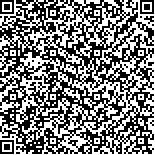| 引用本文: |
徐文峰, 何泽云, 李旭华, 孙丽, 唐群, 彭亚军, 陈海莺.六味地黄汤对阿霉素肾病小鼠尿蛋白及肾小球p-p38 MAPK、α-actinin-4、synaptopodin的影响[J].湖南中医药大学学报,2024,44(7):1152-1159[点击复制] |
|
| |
|
|
| 本文已被:浏览 874次 下载 315次 |
| 六味地黄汤对阿霉素肾病小鼠尿蛋白及肾小球p-p38 MAPK、α-actinin-4、synaptopodin的影响 |
| 徐文峰,何泽云,李旭华,孙丽,唐群,彭亚军,陈海莺 |
| (湖南中医药大学第一附属医院, 湖南 长沙 410007;湖南中医药大学, 湖南 长沙 410208;银川市中医医院, 宁夏 银川 750000) |
| 摘要: |
| 目的 探讨六味地黄汤对阿霉素肾病(adriamycin nephropaghy, ADRN)小鼠尿蛋白的干预作用及可能机制。方法 30 只SPF级雄性C57BL/6小鼠随机选取5 只为空白组,余下小鼠以单次尾静脉注射阿霉素(0.01 g·kg-1)复制ADRN模型,2 周后将造模成功的小鼠随机分为模型组、贝那普利组及低、中、高剂量六味地黄汤组,每组5 只。空白组、模型组予等体积注射用水灌胃,贝那普利组予0.0013 g·kg-1贝那普利灌胃,低、中、高剂量六味地黄汤组分别予9.75、19.5、39 g·kg-1六味地黄汤灌胃,每日1次,连续8周。自动生化仪检测小鼠24 h尿蛋白定量、血清白蛋白、血清肌酐、血清钾;HE染色法、电镜观察小鼠肾脏病理改变及足突形态;免疫组织化学法、Western bolt检测小鼠肾脏磷酸化p38 MAPK(phosphorylated p38 MAPK, p-p38 MAPK)、α-辅肌动蛋白-4(α-actinin-4)、突触孔蛋白(synaptopodin)的表达;RT-PCR检测小鼠肾脏α-actinin-4、synaptopodin mRNA表达。结果 与空白组比较,模型组小鼠体质量、24 h尿量、血清白蛋白降低,24 h尿蛋白定量升高(P<0.05);肾小球系膜细胞增生,部分系膜区扩大、肾小管蛋白管型,间质可见炎性细胞浸润,足突广泛融合;α-actinin-4蛋白及mRNA、p-p38 MAPK蛋白表达升高(P<0.05),synaptopodin蛋白及mRNA表达降低(P<0.05)。与模型组比较,各干预组病理改变及足突融合均得到不同程度改善,贝那普利组及中、高剂量六味地黄汤组24 h尿蛋白定量减少,高剂量六味地黄汤组p-p38 MAPK蛋白表达降低(P<0.05),低、中、高剂量六味地黄汤组synaptopodin蛋白及mRNA表达均升高(P<0.05)。贝那普利组及低、中、高剂量六味地黄汤组组间比较,各指标差异无统计学意义(P>0.05)。结论 六味地黄汤可能通过抑制p38 MAPK通路活化和上调α-actinin-4、synaptopodin蛋白及mRNA表达,改善肾脏病理及足突融合,减轻足细胞损伤,减少ADRN小鼠尿蛋白。 |
| 关键词: 阿霉素肾病 六味地黄汤 尿蛋白 p-p38 MAPK α-辅肌动蛋白-4 突触孔蛋白 |
| DOI:10.3969/j.issn.1674-070X.2024.07.002 |
| 投稿时间:2023-11-08 |
| 基金项目:湖南省中医重点专科项目(czxm-sbk-2023001);湖南省教育厅优秀项目(20B432);湖南省卫生健康委科研计划资助项目(202103050979);长沙市自然科学基金项目(kq2014220);湖南中医药大学校级科研基金(2018XJJJ36)。 |
|
| Effects of Liuwei Dihuang Decoction on urine protein and glomerular p-p38 MAPK, α-actinin-4, and synaptopodin in mice with adriamycin nephropathy |
| XU Wenfeng, HE Zeyun, LI Xuhua, SUN Li, TANG Qun, PENG Yajun, CHEN Haiying |
| (The First Hospital of Hunan University of Chinese Medicine, Changsha, Hunan 410007, China;Hunan University of Chinese Medicine, Changsha, Hunan 410208, China;Yinchuan Traditional Chinese Medicine Hospital, Yinchuan, Ningxia 750000, China) |
| Abstract: |
| Objective To investigate the intervention effects of Liuwei Dihuang Decoction (LWDHD) on urine protein in mice with adriamycin nephropathy (ADRN) and its possible mechanism. Methods Five of 30 SPF-grade male C57BL/6 mice were randomly selected as the blank group, and the remaining mice were injected with adriamycin (0.01 g·kg-1) via the tail vein to replicate the ADRN model. Two weeks later, the successfully modeled mice were randomized into the model group, the benazepril group, and the low-, medium-, and high-dose LWDHD groups, with 5 mice in each group. The blank and model groups were given an equal volume of water for injection by gavage. The benazepril group was given 0.001 3 g·kg-1 benazepril by gavage, while the low-, medium-, and high-dose LWDHD groups were given 9.75, 19.5, and 39 g·kg-1 LWDHD by gavage respectively, once a day for 8 consecutive weeks. Automatic biochemical analyzer was used to check the 24-hour urine protein quantification, and the serum levels of albumin, creatinine, and potassium in mice. HE staining and electron microscopy were used to observe renal pathological changes and foot process morphology. Immunohistochemistry and Western blot were used to examine the expressions of phosphorylated p38 MAPK (p-p38 MAPK), α-actin-4, and synaptopodin proteins in mice kidneys. RT-PCR was used to examine the expressions of α-actin-4 and synaptopodin mRNA in mice kidneys. Results Compared with the blank group, the body weight, 24-hour urine volume, and serum albumin level of the model group decreased, while the 24-hour urine protein quantification increased (P<0.05); hyperplasia of glomerular mesangial cells, partial mesangial area expansion, renal tubular protein casts, and interstitial inflammatory cell infiltration were observed, with extensive fusion of foot processes; the expressions of α-actinin-4 protein and mRNA, and p-p38 MAPK protein increased (P<0.05), while the expressions of synaptopodin protein and mRNA decreased (P<0.05). Compared with the model group, the pathological changes and foot process fusion in each intervention group were improved to varying degrees. The quantitative reduction of 24-hour urine protein was observed in the benazepril group as well as the medium- and high-dose LWDHD groups. The expression of p-p38 MAPK protein decreased in the high-dose LWDHD group (P<0.05), while the expressions of synaptopodin protein and mRNA increased in the low-, medium-, and high-dose LWDHD groups (P<0.05). There was no statistically significant difference in various indicators among benazepril group and the low-, medium-, and high-dose LWDHD groups (P>0.05). Conclusion LWDHD may relieve renal pathological changes and foot process fusion, alleviate foot cell damage, and reduce urine protein in mice with ADRN, by inhibiting the activation of the p38 MAPK pathway and upregulating the protein and mRNA expressions of α-actin-4 and synaptopodin. |
| Key words: Liuwei Dihuang Decoction proteinuria p-p38 MAPK α-actinin-4 synaptopodin |
|

二维码(扫一下试试看!) |
|
|
|
|




